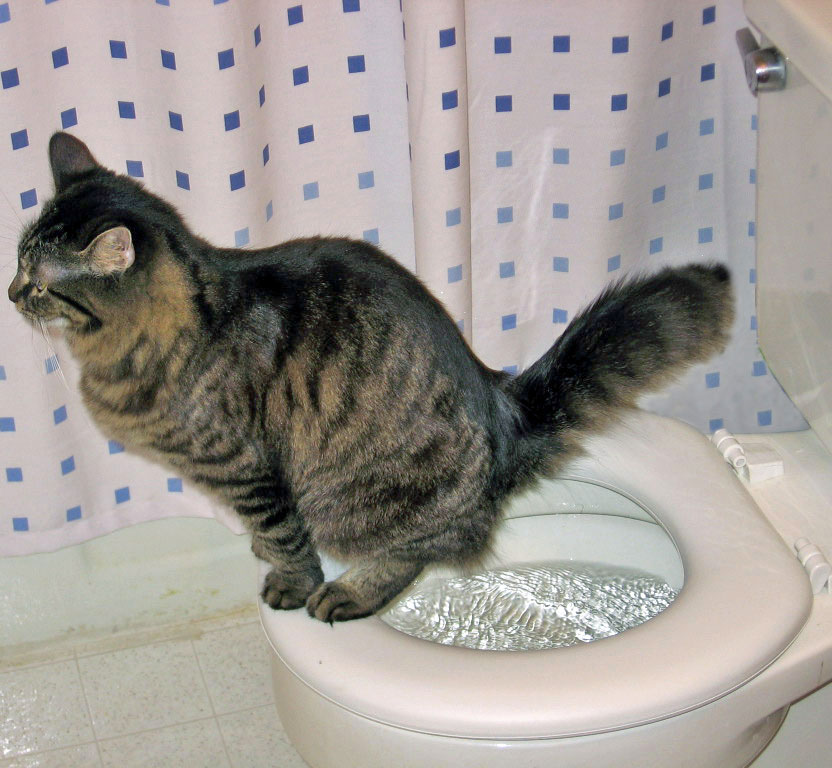Dangers of Flushing Cat Poop in Your Toilet - Preventive Steps
Dangers of Flushing Cat Poop in Your Toilet - Preventive Steps
Blog Article
The author is making several good observations on the subject of How to Dispose of Cat Poop and Litter Without Plastic Bags in general in this post underneath.

Introduction
As cat proprietors, it's vital to be mindful of exactly how we dispose of our feline buddies' waste. While it might seem hassle-free to flush pet cat poop down the toilet, this technique can have harmful repercussions for both the environment and human health and wellness.
Ecological Impact
Flushing feline poop presents harmful microorganisms and bloodsuckers right into the water supply, positioning a considerable danger to marine ecosystems. These contaminants can negatively impact marine life and compromise water high quality.
Health and wellness Risks
In addition to environmental issues, flushing cat waste can also pose wellness threats to human beings. Feline feces may contain Toxoplasma gondii, a bloodsucker that can create toxoplasmosis-- a potentially extreme ailment, specifically for expectant females and people with weakened immune systems.
Alternatives to Flushing
Thankfully, there are safer and more liable means to throw away feline poop. Consider the following choices:
1. Scoop and Dispose in Trash
The most common approach of throwing away feline poop is to scoop it into an eco-friendly bag and throw it in the garbage. Make sure to make use of a devoted litter scoop and dispose of the waste promptly.
2. Usage Biodegradable Litter
Opt for biodegradable cat trash made from materials such as corn or wheat. These litters are environmentally friendly and can be safely thrown away in the trash.
3. Hide in the Yard
If you have a yard, think about burying feline waste in a designated area far from veggie gardens and water sources. Be sure to dig deep adequate to stop contamination of groundwater.
4. Set Up a Pet Waste Disposal System
Invest in a pet garbage disposal system particularly designed for pet cat waste. These systems utilize enzymes to break down the waste, reducing smell and environmental influence.
Final thought
Liable animal possession extends past providing food and sanctuary-- it also includes correct waste management. By avoiding purging cat poop down the bathroom and going with alternative disposal techniques, we can lessen our ecological impact and protect human health and wellness.
Why Can’t I Flush Cat Poop?
It Spreads a Parasite
Cats are frequently infected with a parasite called toxoplasma gondii. The parasite causes an infection called toxoplasmosis. It is usually harmless to cats. The parasite only uses cat poop as a host for its eggs. Otherwise, the cat’s immune system usually keeps the infection at low enough levels to maintain its own health. But it does not stop the develop of eggs. These eggs are tiny and surprisingly tough. They may survive for a year before they begin to grow. But that’s the problem.
Our wastewater system is not designed to deal with toxoplasmosis eggs. Instead, most eggs will flush from your toilet into sewers and wastewater management plants. After the sewage is treated for many other harmful things in it, it is typically released into local rivers, lakes, or oceans. Here, the toxoplasmosis eggs can find new hosts, including starfish, crabs, otters, and many other wildlife. For many, this is a significant risk to their health. Toxoplasmosis can also end up infecting water sources that are important for agriculture, which means our deer, pigs, and sheep can get infected too.
Is There Risk to Humans?
There can be a risk to human life from flushing cat poop down the toilet. If you do so, the parasites from your cat’s poop can end up in shellfish, game animals, or livestock. If this meat is then served raw or undercooked, the people who eat it can get sick.
In fact, according to the CDC, 40 million people in the United States are infected with toxoplasma gondii. They get it from exposure to infected seafood, or from some kind of cat poop contamination, like drinking from a stream that is contaminated or touching anything that has come into contact with cat poop. That includes just cleaning a cat litter box.
Most people who get infected with these parasites will not develop any symptoms. However, for pregnant women or for those with compromised immune systems, the parasite can cause severe health problems.
How to Handle Cat Poop
The best way to handle cat poop is actually to clean the box more often. The eggs that the parasite sheds will not become active until one to five days after the cat poops. That means that if you clean daily, you’re much less likely to come into direct contact with infectious eggs.
That said, always dispose of cat poop in the garbage and not down the toilet. Wash your hands before and after you clean the litter box, and bring the bag of poop right outside to your garbage bins.
https://trenchlesssolutionsusa.com/why-cant-i-flush-cat-poop/

As a keen reader on Don’t flush cat feces down the toilet, I figured sharing that article was a good idea. Do you know another person who is excited about the niche? Why not promote it. I am grateful for your time. Kindly stop by our site back soon.
Click Here Report this page